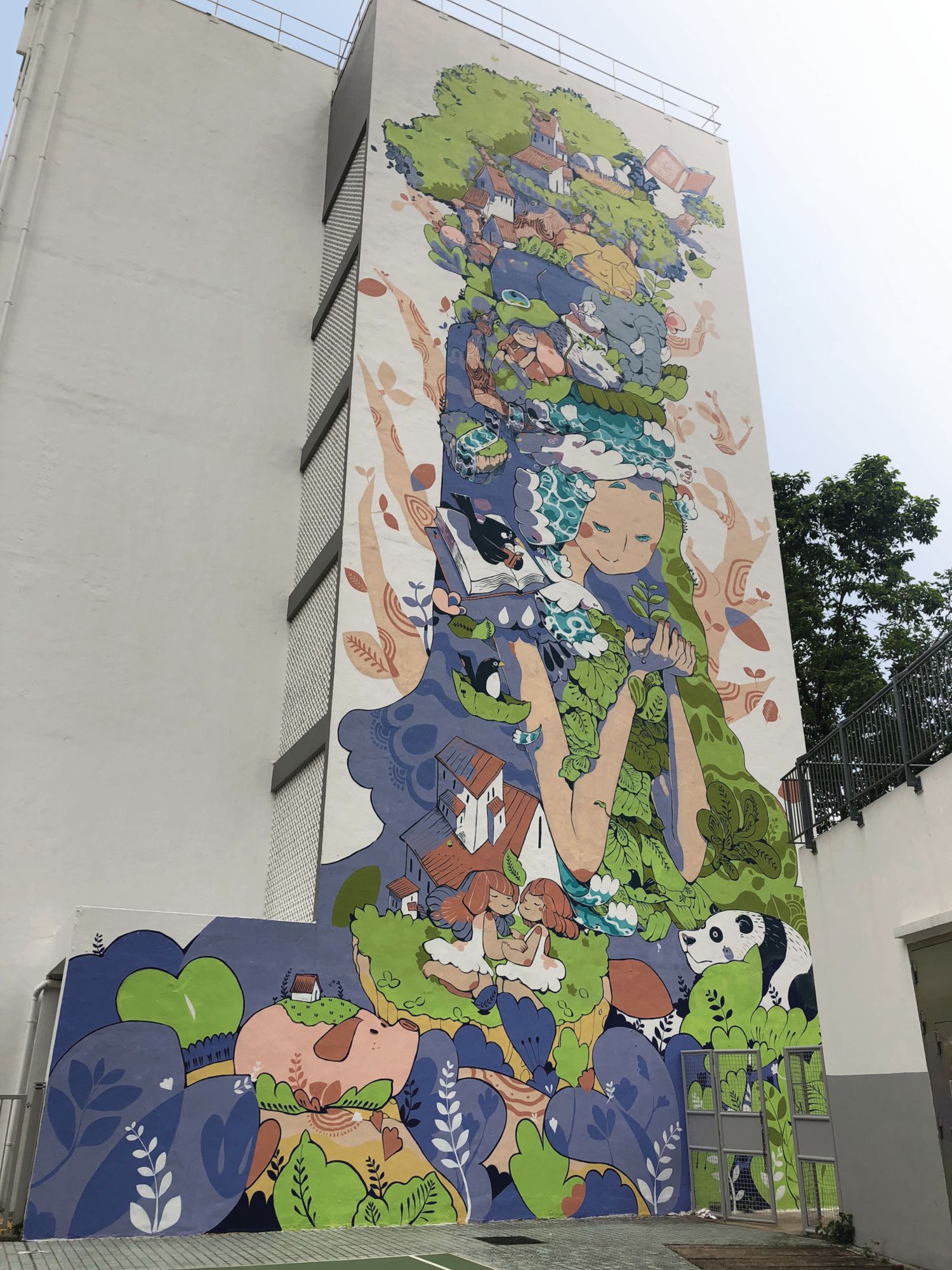As the fifth edition of the HKwalls street art and mural festival goes ahead this month, four Hong Kong artists discuss what inspires their work
When Jason Dembski moved to Hong Kong to start a new job in 2009, what captivated him about the city was less its buildings and more the street art scattered on its walls. He began taking photos to document what he saw, as he felt graffiti was underappreciated by wider society.
“Back then, there weren’t a lot of sanctioned or legal murals. Not a lot of galleries or art fairs here were ready for street art,” says Dembski, an architect originally from the US, who co-founded the non-profit HKwalls in 2014. “Lots of artists were creating illegal work on the streets and going to abandoned buildings, such as ATV [a former television studios] in Sai Kung, to paint bigger artworks without being bothered by police.”
From prehistoric cave etchings to gang tags on New York City train cars, the need to leave an identifying mark as a message to others is a trait as old as the human race. Graffiti and street art spread from American culture to Hong Kong in the 2000s through media such as magazines, movies and MTV.
Seven years since its inception, the city’s largest annual street art festival returns this month with an exhibition at Soho House to introduce a pilot youth mentorship programme that will cultivate young artists while showing street art to the public through the many murals. Here, four artists share why they go to the wall for Hong Kong street art.
See also: HKwalls Street Art Festival Returns This May 2021 In Sai Kung
Bao Ho

Bao Ho is one of few street artists born, raised and educated in Hong Kong. Her mural series, which features a white, bun-shaped character called Bao (“bun” in Cantonese), can be seen in the K11 Musea mall as well as in the offices of Google and Uber. Ho was crowned the “Queen of Hong Kong’s street art scene” by local media when she won the Hong Kong Secret Walls contest in 2015, just one year after she became a professional artist.
Ho’s personal experiences inspire her art, which is centred around freestyle doodles that reflect dark topics. Somewhat unconventionally for a street artist, she uses brushes and paint, a technique that is “more direct and faster in capturing my overflowing ideas before they’re gone”, Ho explains. “But mostly, it’s because I didn’t come from a street art background and I’m not familiar with using spray.”
Ho receives commissions from major international brands as companies race to align themselves with a younger demographic that values authenticity. “Previously, companies used influencers to promote their products, but more clients are looking for street artists for collaborations. I believe Hong Kong will have more space for artists in the future,” she says. “But I’m most happy that my family finally gives my artistic career their full support.”




